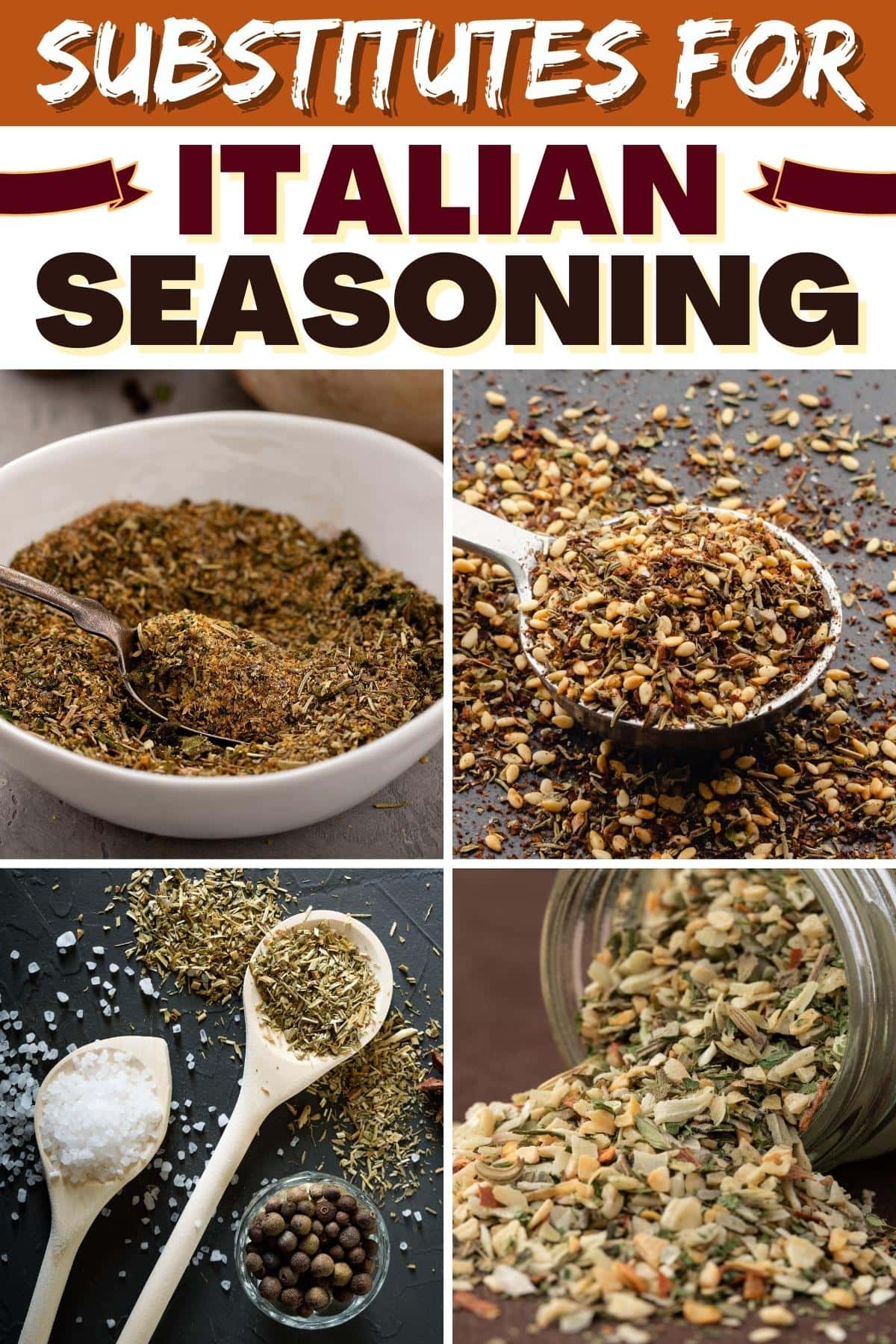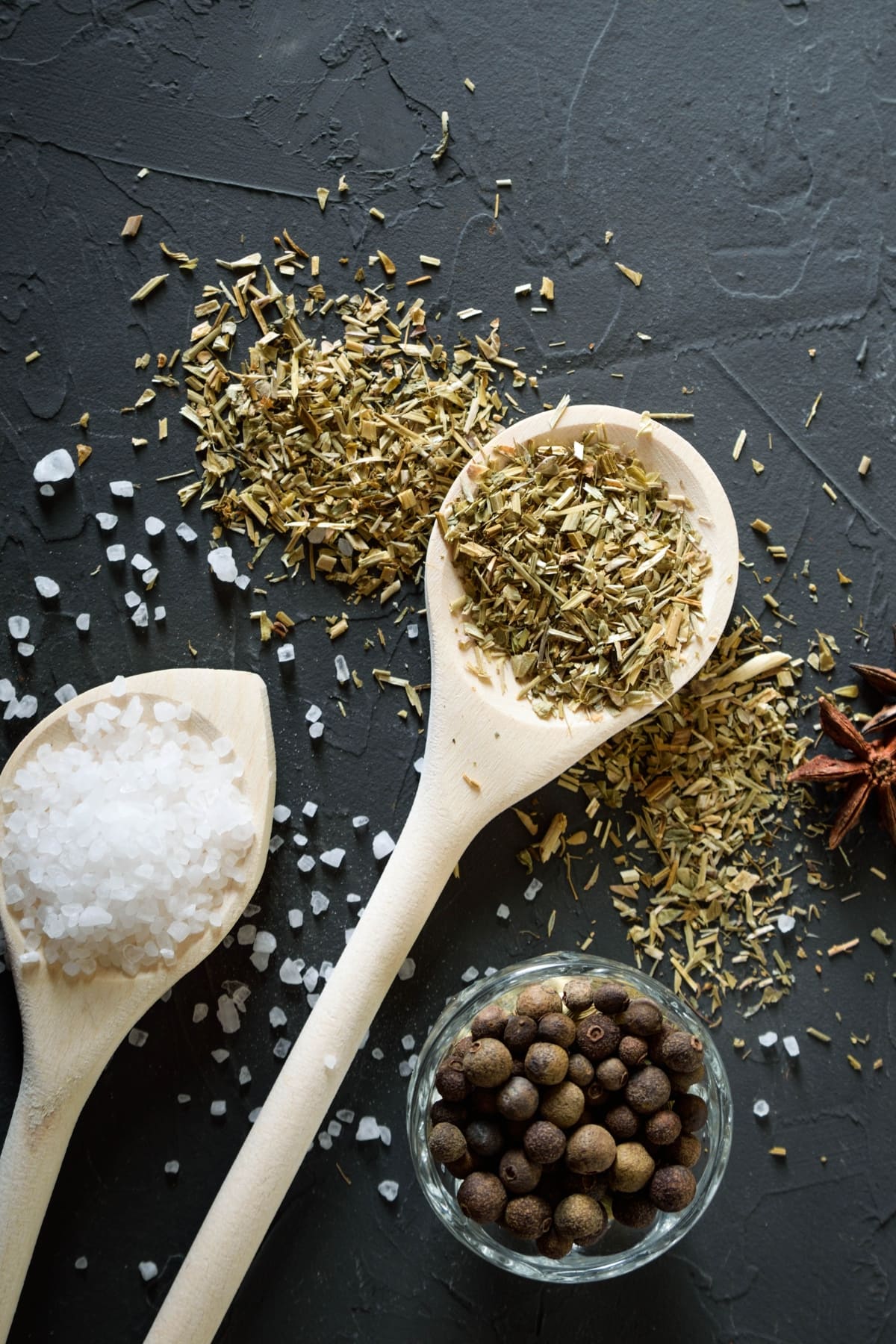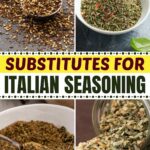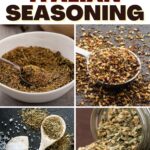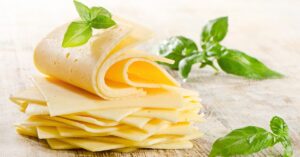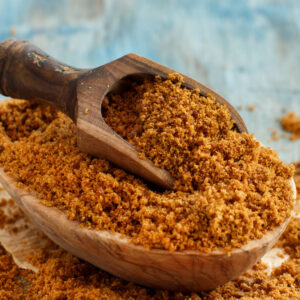Italian seasoning is a flavorful blend of basil, oregano, rosemary, thyme, and more. The best substitutes for Italian seasoning include various combinations of different herbs.
From homemade Italian seasoning to Herbes de Provence and Greek seasoning, there are many options to rescue your dish.
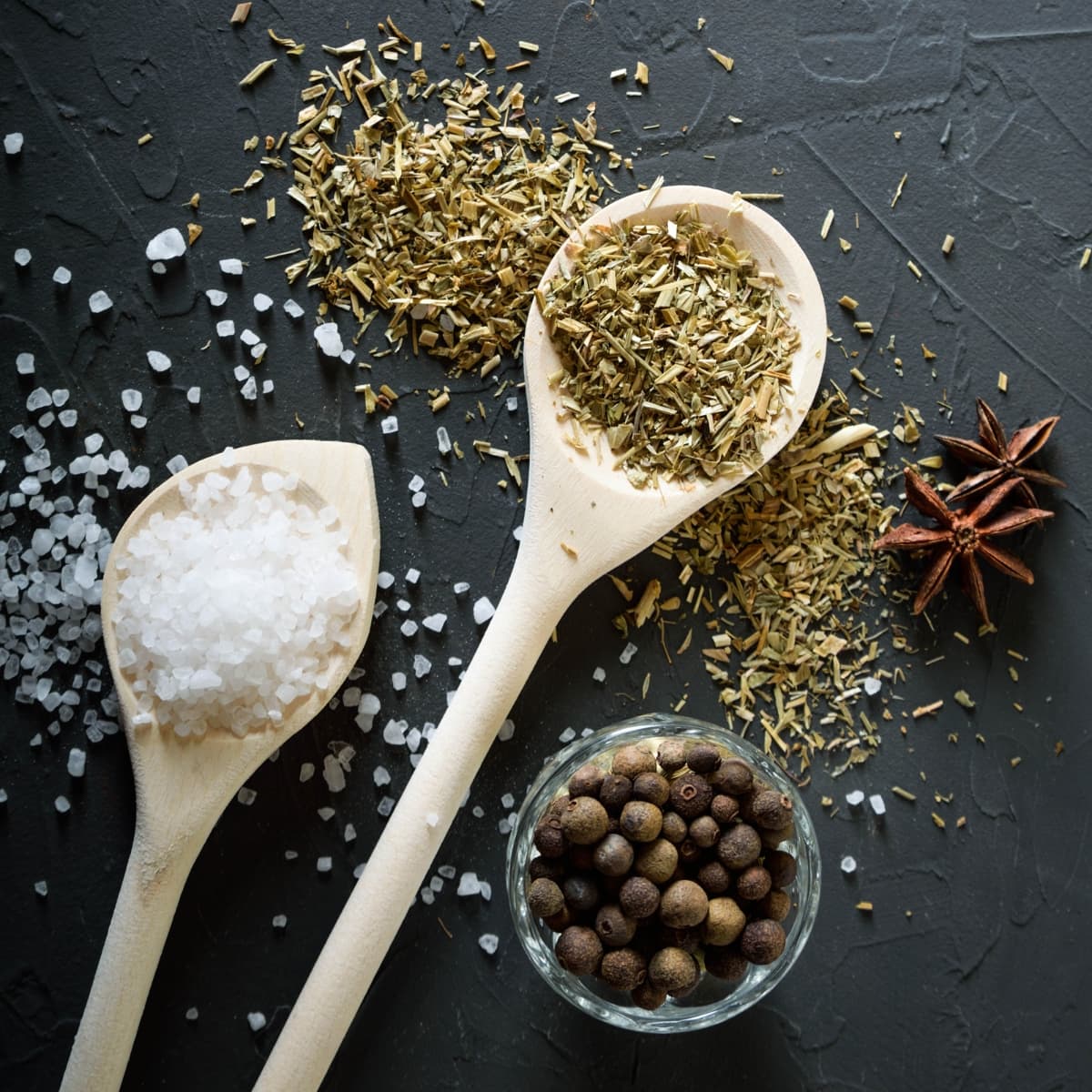
There’s no bigger letdown than being in the middle of a recipe and realizing you’re out of Italian seasoning. Thankfully, there are several alternatives that mimic its flavor profile.
Not only will they save your recipe, but they’ll also introduce you to new and exciting flavors!
Main Ingredients in Italian Seasoning
Italian seasoning is a blend of dried herbs that evoke classic Italian flavors.
While the exact mix varies, Italian seasoning contains oregano, marjoram, basil, rosemary, thyme, and sage.
Some blends also contain garlic powder, dehydrated garlic, and onion.
Despite its name, Italian seasoning is an American creation and is not a traditional ingredient used in Italy. Still, it’s designed to encapsulate the essence of Italian culinary herbs.
It’s the perfect addition to a pizza, marinara, or any dish you want to give an Italian twist to.
Italian Seasoning Uses
This versatile blend is perfect for pizzas, pasta, meats, you name it.
Italian seasoning is a go-to for giving your dishes a punch of Italian flavor. Just a dash can transform these simple dishes into something special.
- Sprinkle it on pizza or bread before baking
- Rub it on grilled meats
- Mix it into your tomato soup, pasta sauce, or marinara
Just be mindful of the amount. A little goes a long way, and you can always add more to taste!
Best Substitutes for Italian Seasoning
Since there is no set recipe for Italian seasoning, it’s easy to create your custom blend at home. Here are some fantastic substitutes for Italian seasoning.
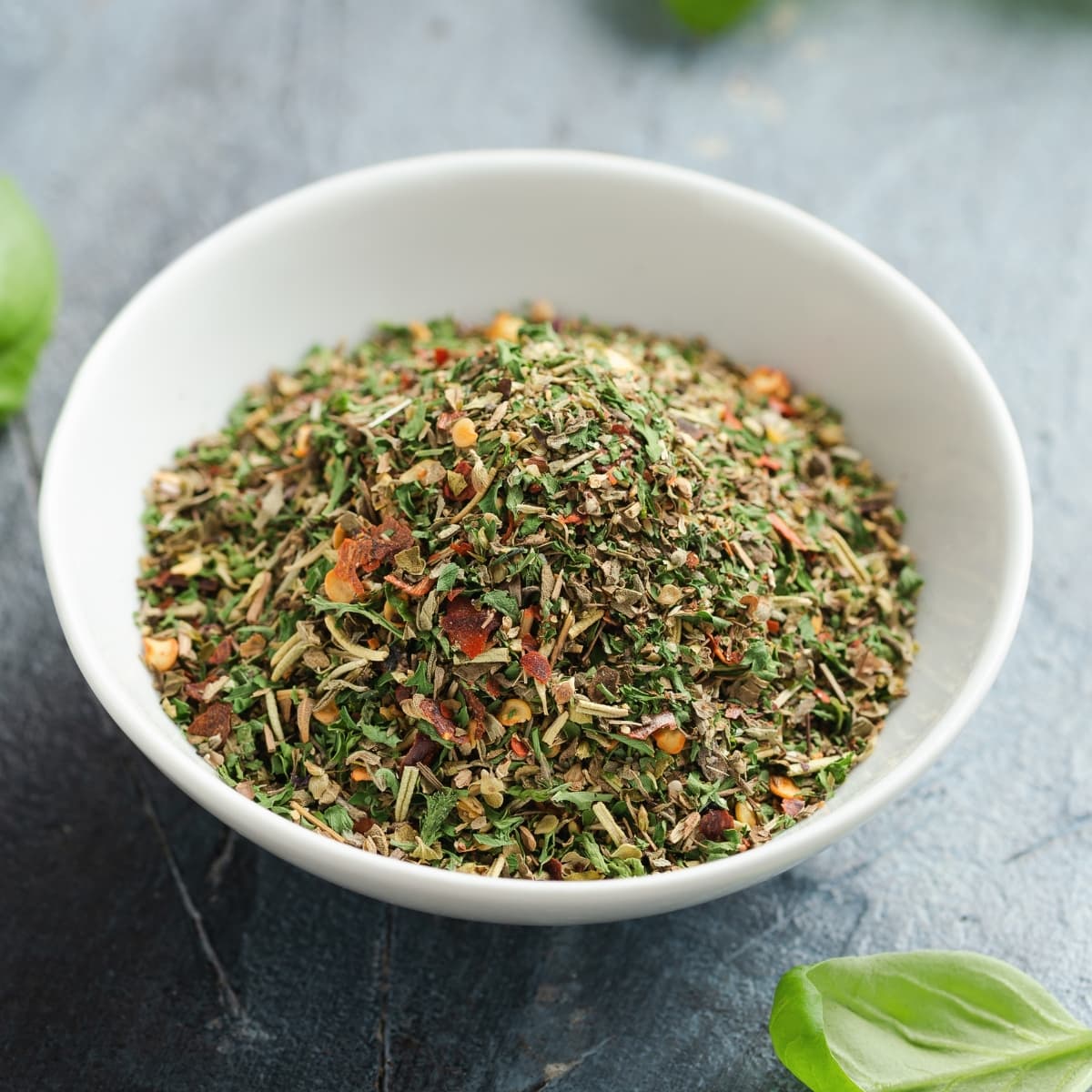
1. Homemade Italian Seasoning
You may not have a pre-made Italian seasoning blend. But chances are, your cupboard is stocked with jars of dried herbs.
The best solution when you’re out of Italian seasoning is to make your own at home! Creating a blend allows you to adjust the ratios to suit your taste, making dishes uniquely your own.
If you’re not in the mood for experimenting, here’s an excellent recipe to guide you.
Essentially, it’s a combination of oregano, basil, thyme, sage, and rosemary.
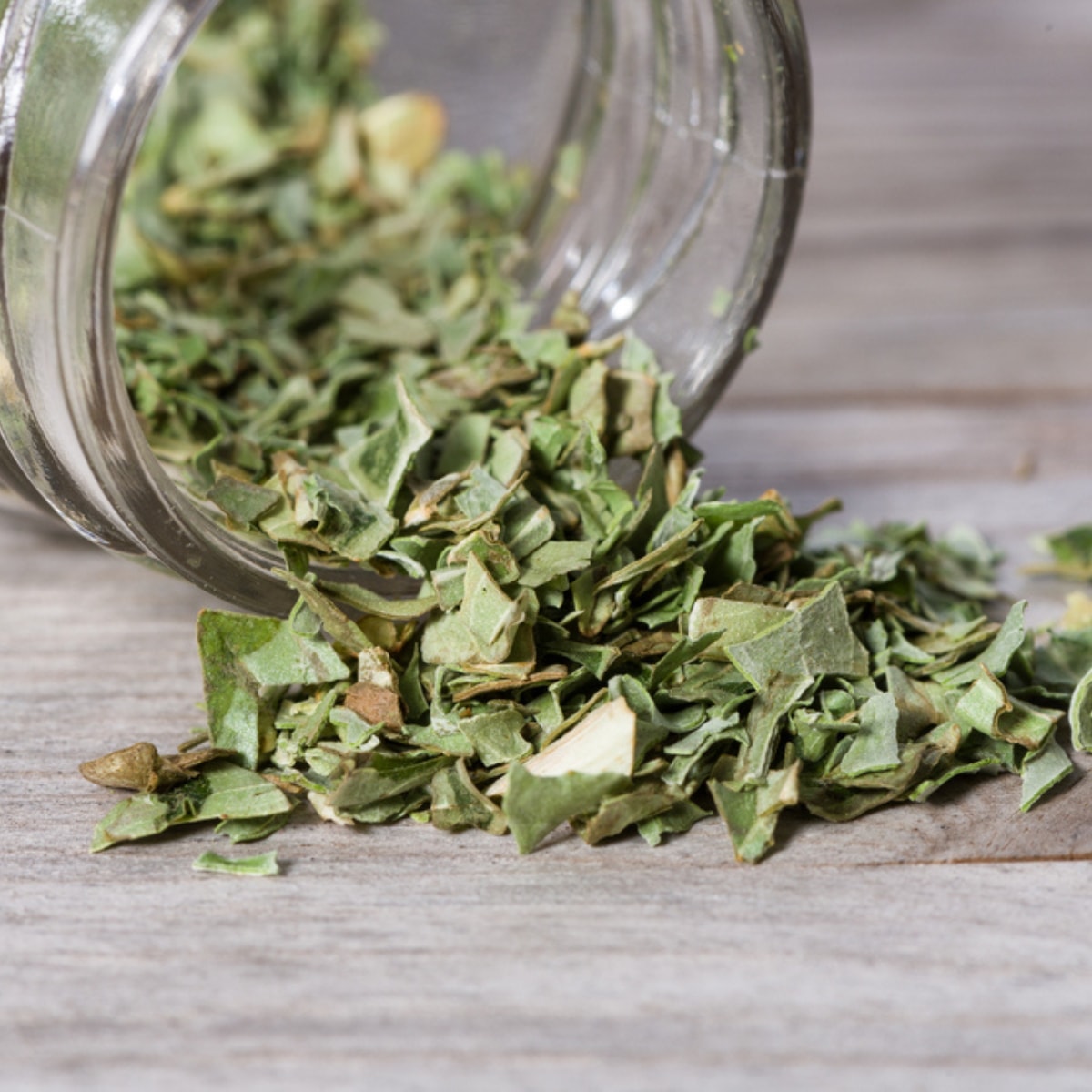
2. Dried Basil and Oregano
Dried basil and oregano are the backbone of the seasoning blend, packing the most punch of traditional Italian flavor.
Since they’re staples in most spice racks, you likely have them on hand.
So if you’re out of the other components of Italian seasoning, this simplified duo can step in seamlessly.
Mix 2 teaspoons of basil with 1 teaspoon of oregano. This blend will replace 1 tablespoon of Italian seasoning.
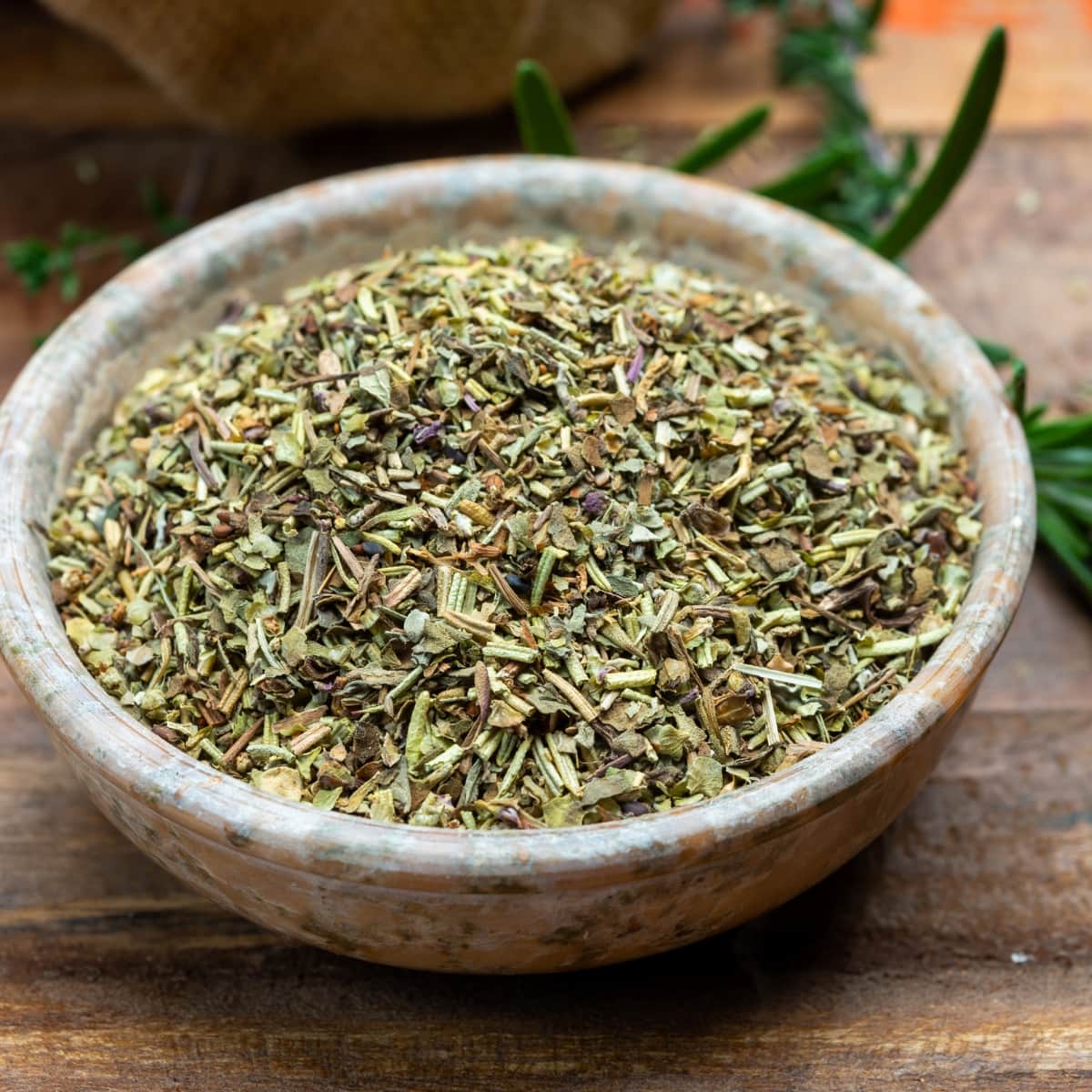
3. Dried Basil, Oregano, and Thyme
Dried basil, oregano, and thyme are key players in Italian cooking.
Basil can elevate a pesto sauce, while oregano shines in roasted vegetables and grilled meats. And thyme is perfect in a hearty tomato soup.
When combined, they create a fantastic alternative to Italian seasoning.
To make one teaspoon of Italian seasoning, mix 1/2 teaspoon of dried basil, 1/2 teaspoon of oregano, and 1/4 teaspoon of thyme.
This blend works beautifully in pasta dishes, pizzas, and other Italian recipes.
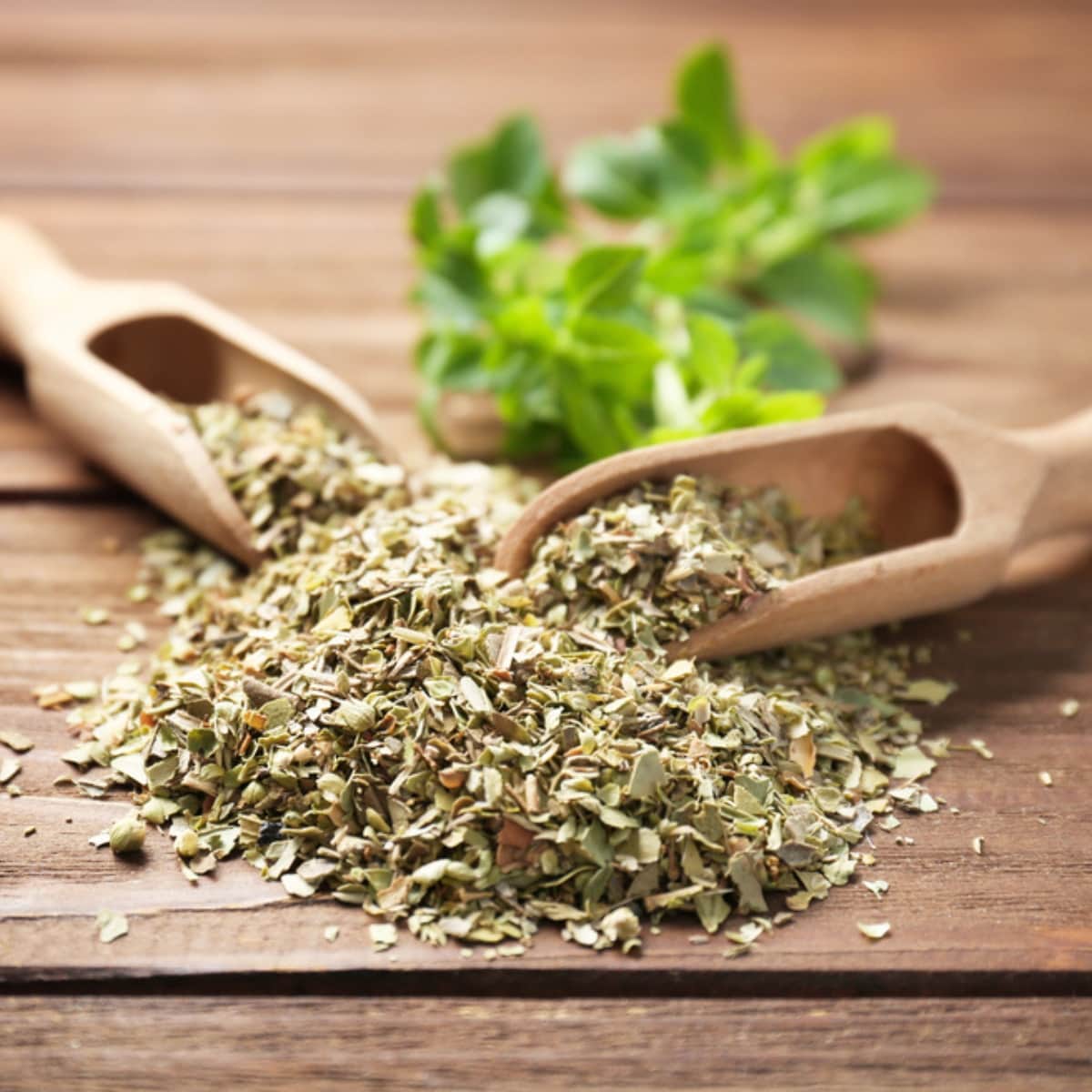
4. Any Single Dried Italian Herb
If you’re not in the mood to make blends, just use any single dried Italian herb.
Oregano, with its aromatic and slightly earthy notes, is a superb stand-in. Use it in equal quantities as the Italian seasoning called for.
Marjoram is a milder, sweeter cousin of oregano and thyme. It works well, too, but start with half the amount.
Thyme is a member of the mint family. It brings classic Italian flavor, but again, start with half the amount.
Basil alone can add an earthy, sweet touch to your dish.
If you’re considering rosemary or sage, be cautious, as they’re potent. Start with a quarter of the amount and adjust to taste.
For a subtler option, try parsley. It adds a slight bitterness and can balance a dish beautifully.
The key with these single-herb substitutes is to start small and adjust according to your taste.
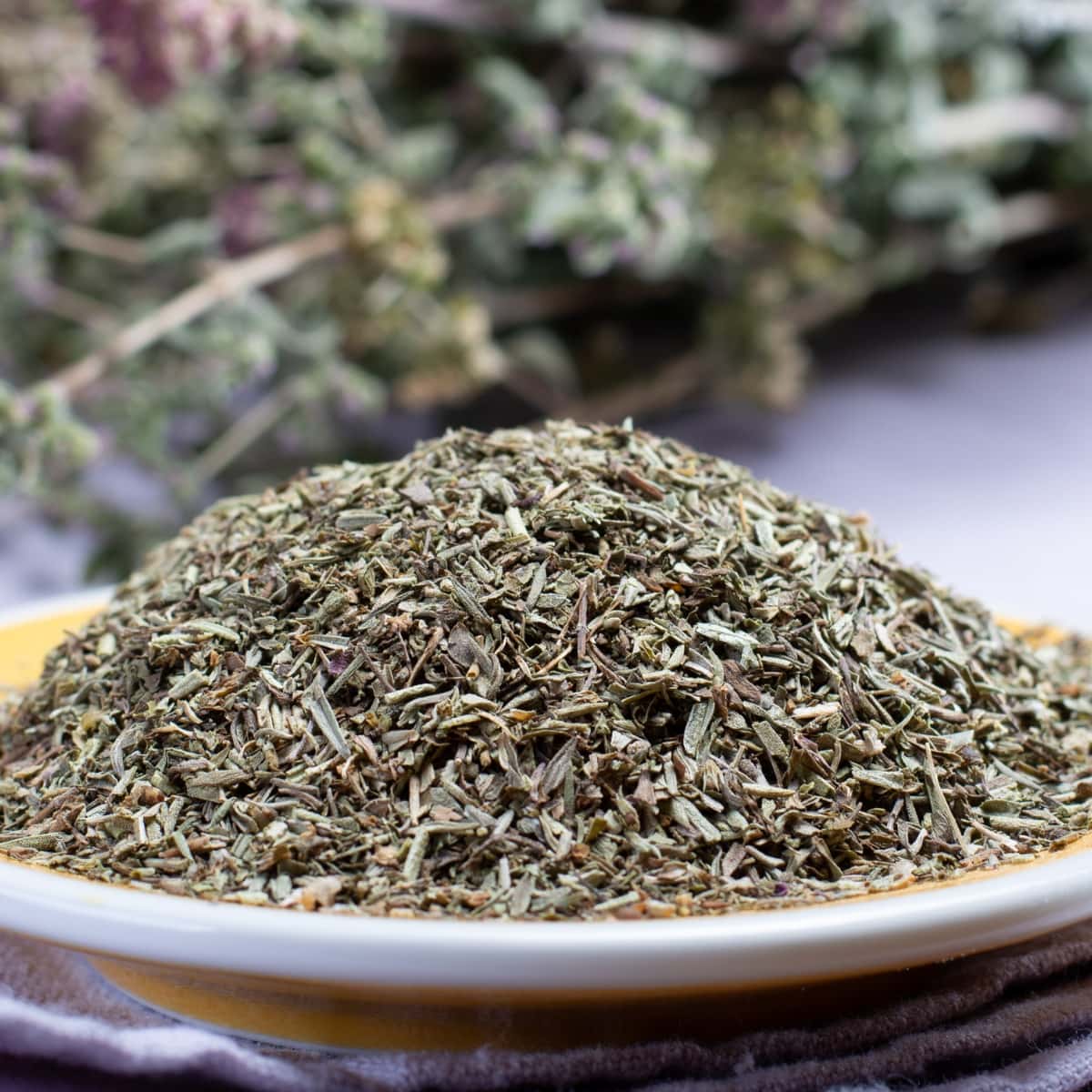
5. Herbs de Provence
Herbes de Provence isn’t just for French cooking! This blend, hailing from Southeastern France, includes rosemary, thyme, marjoram, and sometimes lavender.
If you have a jar of this in your pantry and are out of Italian seasoning, it can step in as a pinch hitter.
But here’s the deal: give it a sniff first. If it smells like a lavender field in full bloom, skip it for your spaghetti sauce. The floral note can clash with savory Italian dishes.
But if it’s more herby and less flowery, sub it in for Italian seasoning. It’s a classic with chicken and veggies, and it might just become your new secret ingredient.
To play it safe, start with half the amount your recipe calls for and adjust from there.

6. Pizza Seasoning
Pizza seasoning, with its oregano-forward punch, is a fantastic stand-in for Italian seasoning.
You won’t find this blend in a traditional Italian kitchen. But it’s a champ at amplifying Italian flavors in your home-cooked meals.
Pizza seasoning shares a common base with Italian seasoning: oregano, basil, and thyme. But it also packs extra flavor from garlic powder, onion powder, and fennel.
These additions aren’t typically in Italian seasoning, but they’re no strangers to Italian cuisine.
Swap pizza seasoning directly for Italian seasoning in your recipe.
Just a heads up, though. If your pizza seasoning contains salt, dial back the salt in your dish to keep things balanced.
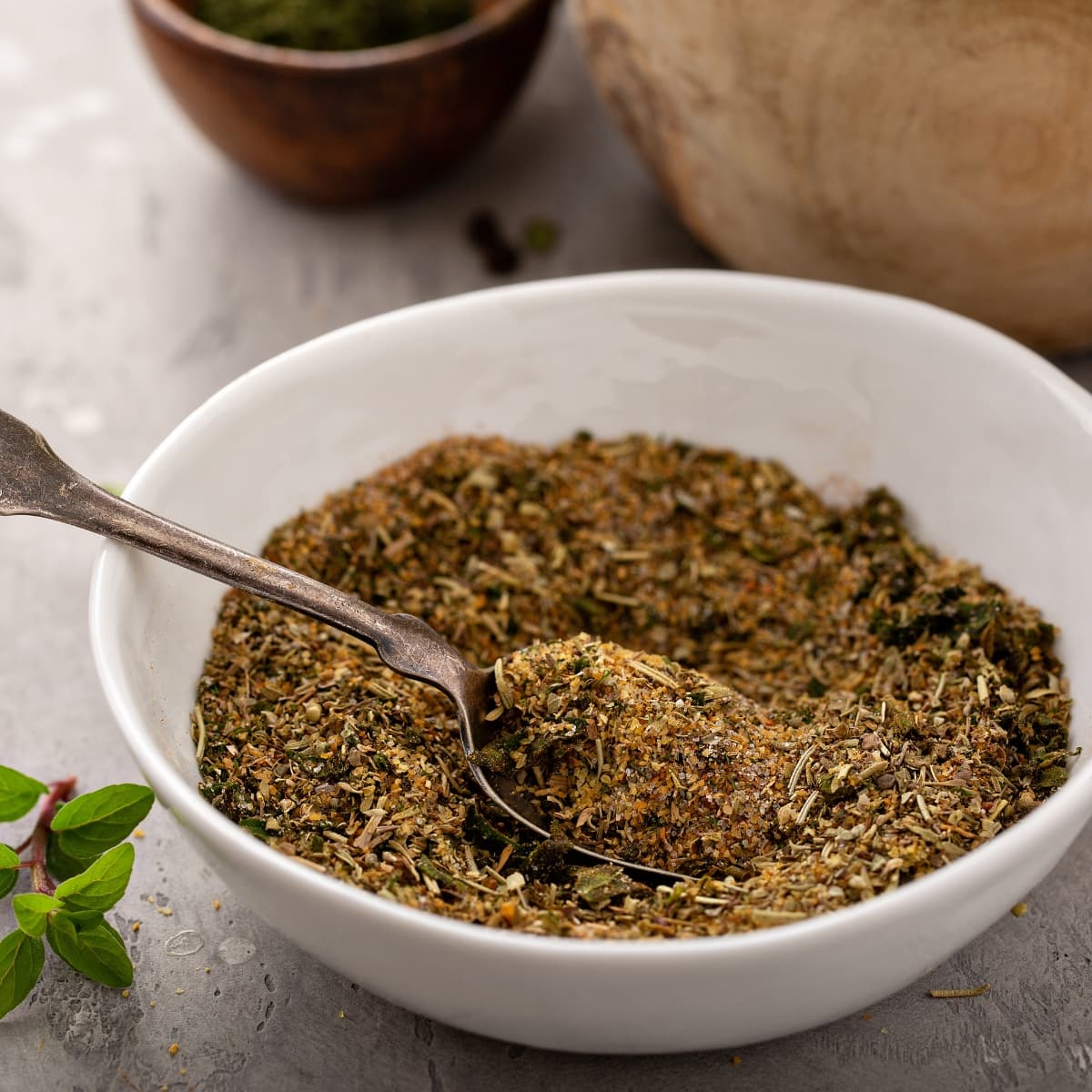
7. Greek Seasoning
Greek seasoning is your passport to a quick Italian seasoning substitute. It has oregano as the star of the show. It also brings familiar flavors like basil, parsley, and garlic powder to the table.
Here’s the twist: it also often includes dill, onion powder, and black pepper, giving it a distinct personality. While fragrant and vibrant, dill has a strong presence. So think about whether it’ll play nicely with your dish.
Swap in Greek seasoning for Italian seasoning, measure for measure, but mind the salt.
If your Greek seasoning has salt, do a quick taste test before adding extra to your meal.
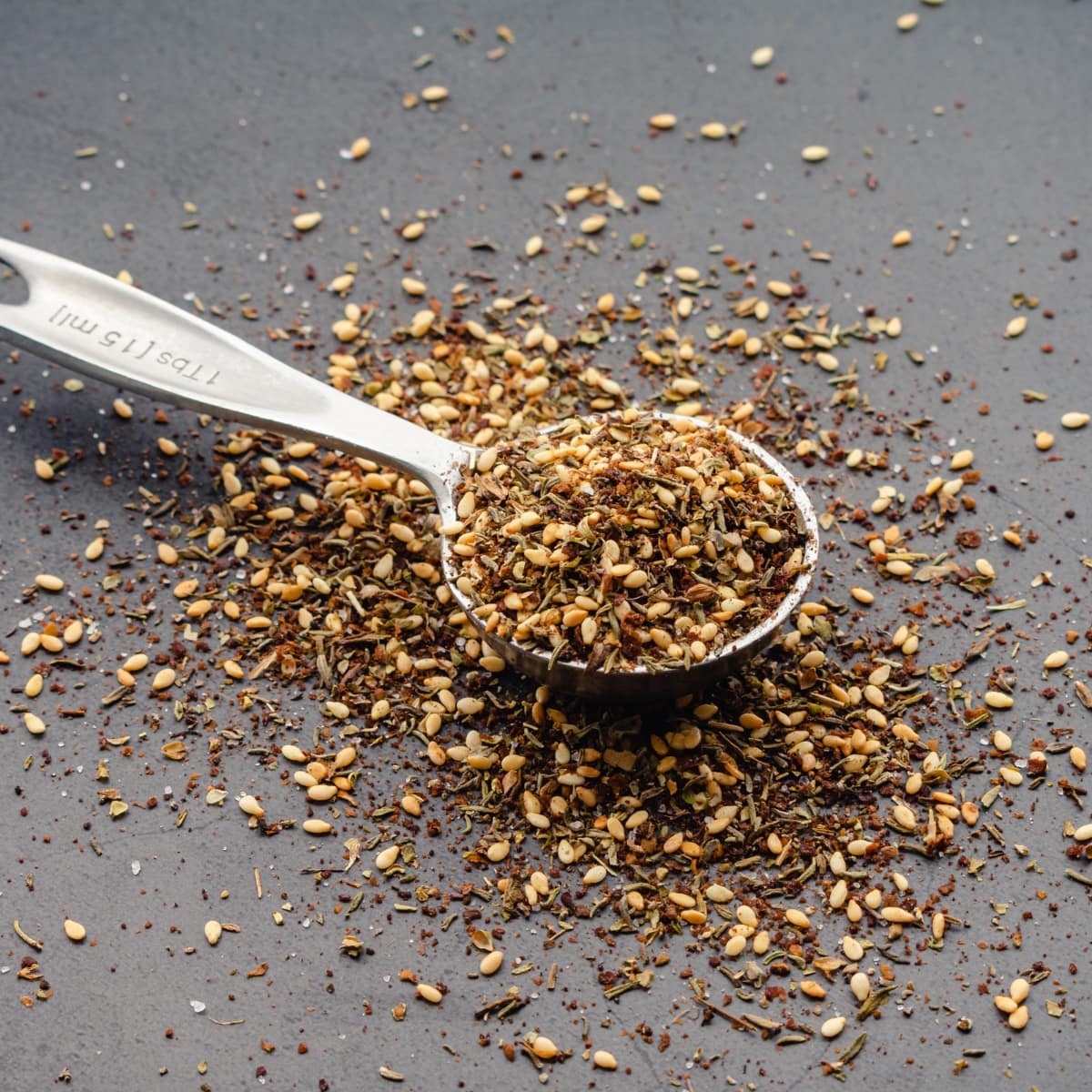
8. Za’atar Seasoning
Za’atar is a Middle Eastern blend featuring oregano and thyme, similar to Italian seasoning. The difference is it includes sesame seeds and often sumac, adding nutty and tart accents.
It’s not ideal for classic Italian dishes due to these unique flavors. But it’s a great substitute to boost flavors in salad dressings. It’s also perfect for sprinkling on finished dishes.
For a substitution, use it in equal parts to Italian seasoning. But start with half and adjust as needed if you’re unsure how it will affect your dish.
Be cautious with traditional Italian dishes like pasta sauces, as za’atar’s unique flavor won’t mesh well.
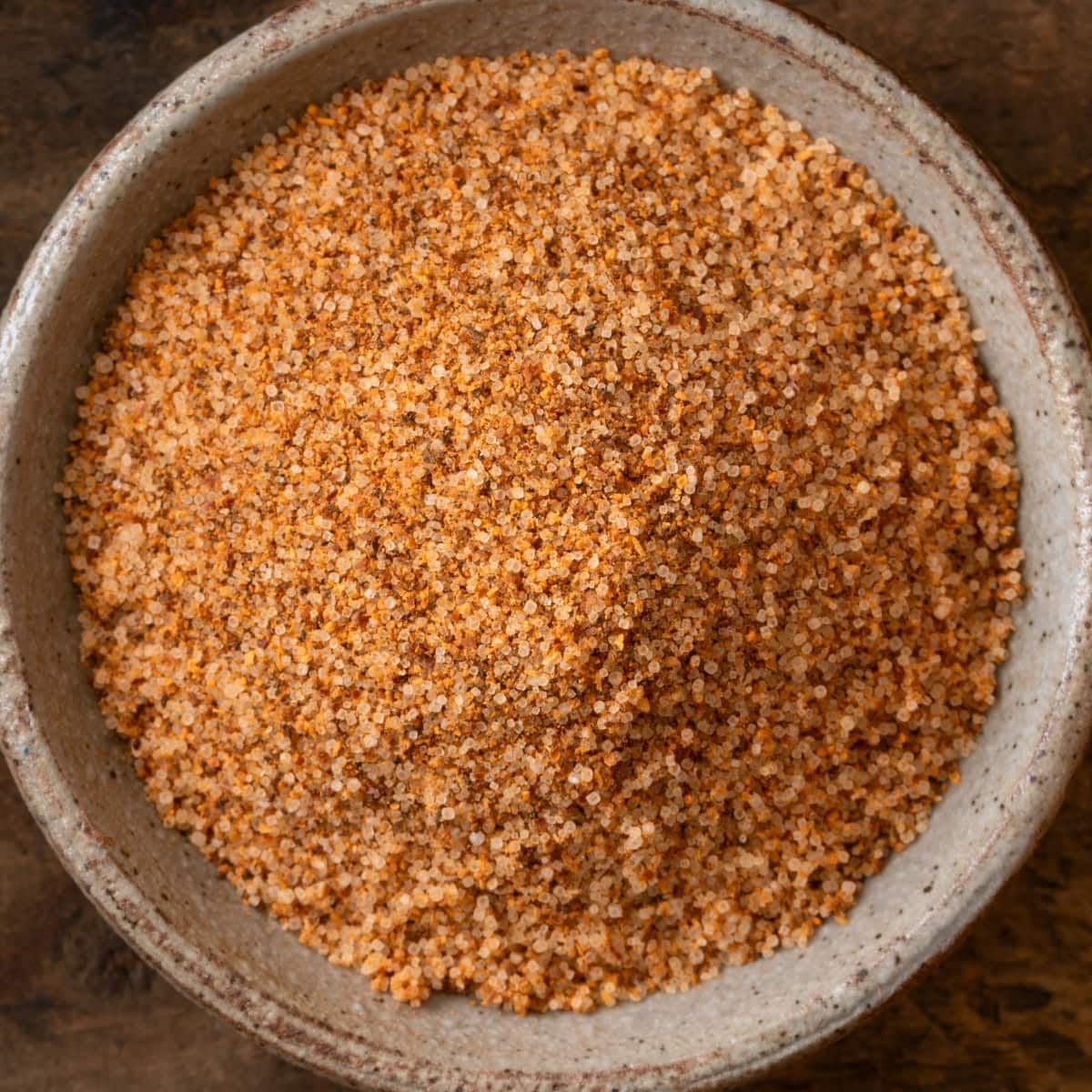
9. Creole Seasoning
Creole seasoning hails from Louisiana. It’s a vibrant blend of paprika, oregano, basil, thyme, and peppers, among other spices.
It’s bolder and spicier than typical Italian seasoning. It’s all thanks to cayenne, black and white pepper, and onion and garlic powder.
While it won’t give you a traditional Italian flavor, it adds a savory and herbaceous punch to your dish. If you’re up for a little culinary adventure, give it a try!
Just be mindful of the salt content in both the seasoning and your recipe, and adjust it as needed.
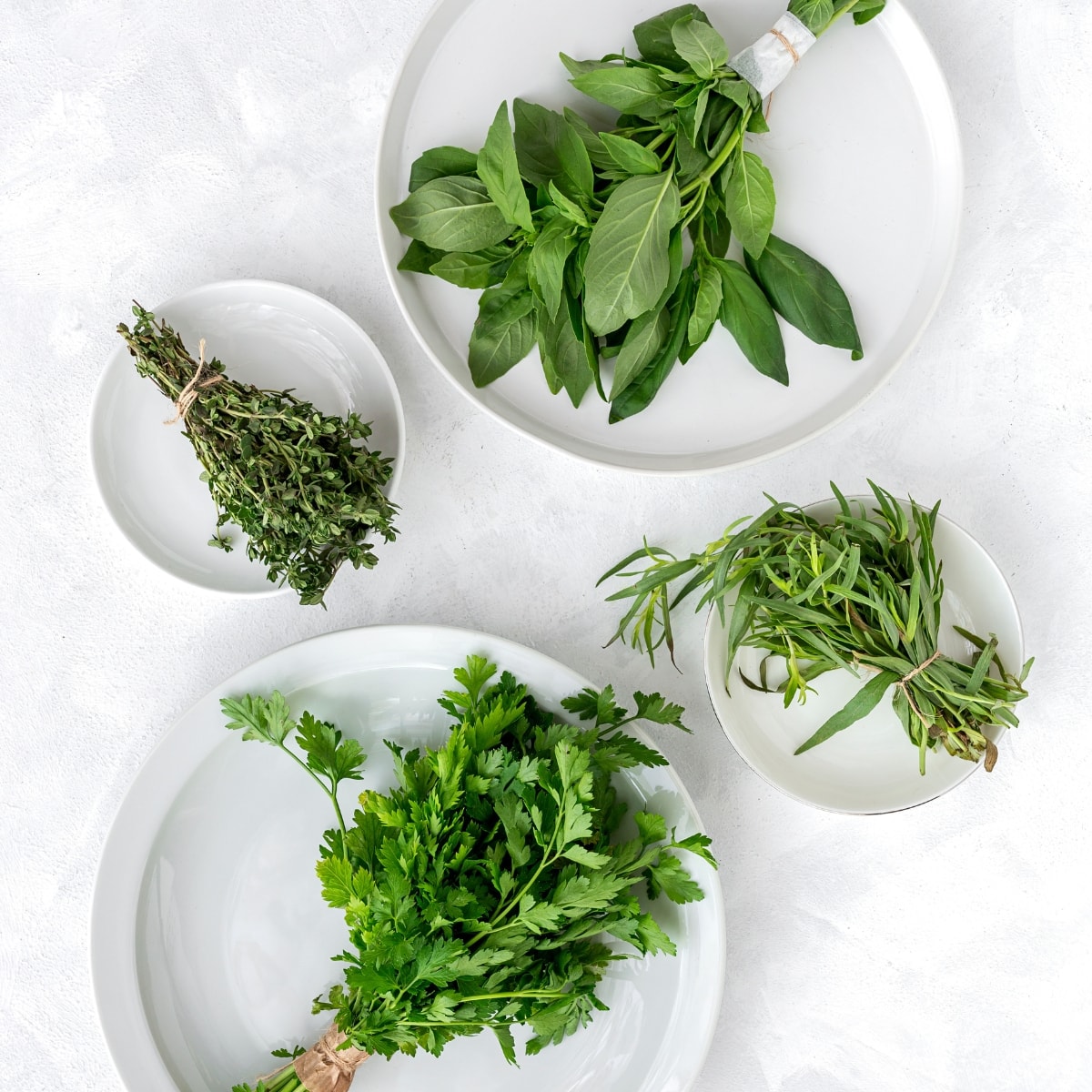
10. Fresh Herbs
For a fresh take on Italian seasoning, reach for oregano, rosemary, and thyme from your garden or grocery. Their fresh, bright profiles can evoke the spirit of Italy in each bite.
Remember, dried herbs pack a more concentrated punch. When subbing in fresh, use three times the amount. Use one teaspoon each of fresh oregano, rosemary, and thyme to replace a teaspoon of Italian seasoning.
Have fresh basil? Don’t cook it to death. Instead, sprinkle thinly sliced leaves over your dish just before serving.
